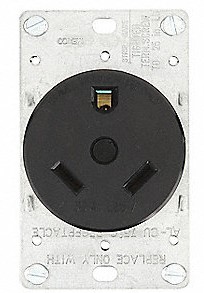

However, if you measure between the terminals on a single tandem breaker, you'll get 0 volts. Each tandem breaker provides 2 120 V circuits, this is true. As others have mentioned, it's not possible to get 240 volts from a single pole in a 120/240V split phase system. It sounds like you may be mistaken as to how this is wired, or that perhaps I'm just not understanding your explanation. It's apparently connected to the left bus and only that bus. The popped dryer breaker is clearly a single pole, as you can see the one entry slot.

I removed the top double-pole breaker for clarity. You can clearly see the two buses and that there doesn't appear to be any shenanigans connecting the two of them. The first 30-amp tandem is the dryer breaker and the second is the water heater.ĮDIT 2: Added photo of the dryer breaker popped off the panel: The very top is a double-pole 20-amp breaker that's fine. So, what's wrong with doing this? What's the ramifications if I don't change these two out with traditional double-pole breakers?ĮDIT: Added photo of the breakers in question: It seems like if this was okay, that I'd hear about using a tandem breaker as a space-saving slim 220v breaker. It's still a single pole breaker, even if there are two 120v circuits coming off it. Both the dryer and water heater were wired this way well before I moved in and it's only now, years later, that I noticed what was going on. I want to stress that this absolutely is working. In the water heater case, there's a 10/2, with both the white and black attached to their respective sides of the tandem breaker. The neutral is connected to the neutral bar. In the case of the dryer circuit, there's one 10/3 NM wire, with the hot black attached to one of the sides of the tandem breaker and the hot red attached to the other side. One of these breakers is used for the clothes dryer and the other for an electric water heater. These are tandem breakers and not "slimline" or "thin" breakers - the two breaker switches on each are not connected in any way. Specifically, there are two Murray MH-T 30-amp breakers. One such oddity is the fact that he installed a couple of tandem circuit breakers for use in 120/240 circuits. As such, there are some oddities in the panel. Overkill will always trump skimping.I inherited a main panel box from a homeowner that wasn't always fond of meeting the required NEC codes.
#30 amp breaker double pole code
Remember that the NEC code book states that following the minimum code requirements does not necessarily provide an efficient installation. and even some materials made right here, I have had issues in the past with sub-standard quality. With so much material being manufactured outside of the U.S. I will NEVER over-current a wire, as I have seen way too many breakers fail to do their job, resulting in major repairs. As far as oversizing the breaker, good luck getting me to go for that! My six grandchildren were sleeping upstairs when the split hvac unit outside compressor locked-up and completely melted the bus bars in the main breaker panel with the breakers never tripping. Unless you can show the inspector in the NEC codebook a valid exception, and gently convince said inspector to give you a variance, you will likely be in for a serious uphill battle. It is the wire insulation that breaks-down, not the current-carrying capacity. Different insulation material ratings just add more confusion, as this will vary your wires maximum ampacity under code. Arguing will very likely cause no end of future grief for the homeowner. One can argue semantics all you want, but the inspector is going to want #14 wire matched up to a 15 amp breaker, #12 wire to a 20 amp, #10 to a 30 amp, etc. Most local inspectors only care about what they see at first impression. In addition, this subject is discussed in further detail by Mike Holt in the following video: See Figure 440-5 and 440-6 in for a clear explanation. It's kind of complicated, but it's all in the NEC, Art.440, Section III.īelow is an excellent overview on Art440 by one of the most respected names in the electrical business, Mike Holt. This is not a hard and fast rule, but it is typical and works for most installations. Things are NOT always as simple as a chart at the home center or a simple electrical book.įor an air con unit you would typically size the conductors to the minimum circuit ampacity (MCA), and size the breaker to the maximum overcurrent protection (MOP). I would not expect the average home inspector to know this.Ī/C units, welders and electric motors have different rules than the "standard" breaker sizing rules. It is perfectly within reason to have #12 wire protected by a 30A breaker when the circuit feeds an A/C unit.


 0 kommentar(er)
0 kommentar(er)
